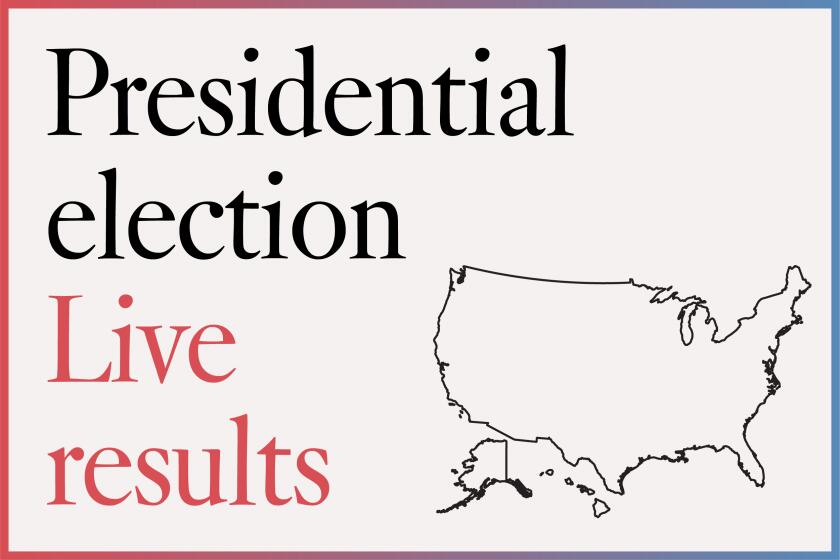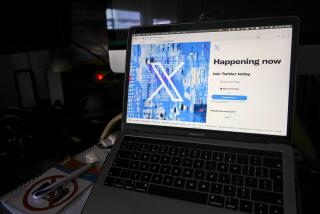Op-Ed: Why can’t a generation that grew up online spot the misinformation in front of them?
The 2020 election has once again demonstrated how easy it is to spread misinformation online. And universities across the U.S. are failing in teaching students how to identify it. Many colleges offer students guides to evaluate the trustworthiness of websites. But too many of them base their advice on a report from 1998. That’s nine years before the first iPhone, and 18 years before Russian interference sparked an urgent discussion on how we interpret information online.
There’s something deeply wrong with using advice on the internet of 20 years ago to teach students how they should interact with the internet of today. That demands 21st century skills.
In a report released last month that we co-authored for the Stanford History Education Group, we saw what happens when educators provide students with outdated advice. Most of the 263 college students we tested floundered when trying to discern fact from fiction online.
Students viewed a post of a “news story” from the Seattle Tribune, a satirical site whose masthead proudly proclaimed that “any resemblance to the truth is purely coincidental.” Two-thirds failed to identify the story as satirical.
On another task, students examined a site offering “nonpartisan” research that argued against raising the minimum wage. The site is actually run by a PR firm that also represents the restaurant industry. Nine in 10 students never made that connection.
Why are intelligent students falling for misinformation they could easily identify with a quick search? It’s not that they lacked strategies. It’s that the strategies deployed were forged during the internet’s Paleolithic era. To students’ detriment, many of these strategies remain prominent on colleges’ and universities’ guides for web credibility.
Students displayed an almost religious faith in the meaning of domains — particularly dot-orgs. “Reliable sources have .org at the end of the URL,” said one sophomore. Numerous college internet guides suggest that dot-orgs are credible because they are restricted to nonprofits. That’s just plain wrong. Anyone can purchase or acquire a dot-org, including for-profit companies such as Craigslist and hate groups such as Stormfront.
Students similarly turned to a site’s “About” page to determine credibility. One prominent university says an About page can “help determine a mission, point of view, or agenda.” A media outlet tells readers to be skeptical if the About page’s language is “melodramatic and seems overblown.” But dispassionate language is just as dangerous when it confers legitimacy on a shady site. Students should be told that, like Instagram profiles, About pages present curated portraits of how people and organizations want to be perceived.
One of the most common tools for teaching web credibility is called the CRAAP test (standing for Currency, Relevance, Authority, Accuracy and Purpose), popularized by a librarian at Cal State Chico. Versions of it are used by universities across the United States, including at other schools in the Cal State and University of California systems.
The CRAAP test assumes that websites are like print texts — the best way to evaluate them is to read them carefully. Except skilled web searchers do the opposite. When professional fact-checkers land on an unfamiliar site, their first move is to leave it by opening new tabs and checking other sources.
There’s good news too. Our study shows that students who followed the same method as professional fact-checkers upped their chances for success. They learned that the Seattle Tribune was fake news and discovered that the “nonpartisan” Employment Policies Institute was managed by a PR firm that also represents the restaurant industry and opposes raising the minimum wage.
Cognitive decline doesn’t fully explain why older adults click share. Social changes and digital illiteracy also play a role.
Some institutions, including Rowan University and the University of Louisville, are creating materials based on what fact-checkers do. Their lesson plans equip students with strategies to be intelligent digital consumers. And even modest interventions — in one case just 150 minutes in two college classes — can lead to marked improvements.
We’re in the midst of an infodemic that imperils our students’ ability to make informed decisions. Changing course will require multiple tactics. First and foremost, we need to cut the CRAAP and stop teaching ineffective strategies. We need to create a menu of regularly updated courses that teach students how to recognize misinformation, empowering them to be engaged and thoughtful citizens.
Additionally, we need to work together across departments and specializations rather than mainly putting this challenge on the shoulders of college librarians. Overhauling a 20th century curriculum for a digital 21st century requires a group effort.
The network’s anchors said several times on Friday that Biden will be president elect once he passes 270 electoral votes.
Doctors who develop a patient’s treatment plan without considering medical advances are negligent. And universities are derelict when they teach or provide source evaluation strategies without considering how today’s internet functions.
Because when anti-vaccine content goes mainstream, when Holocaust deniers peddle digital pseudo-histories, and when issues such as gerrymandering and police brutality are litigated online, no one can afford to shelter in place.
Sam Wineburg is a professor of education at Stanford University. His latest book is “Why Learn History (When It’s Already on Your Phone.)” Nadav Ziv is a junior majoring in international relations at Stanford.
More to Read
A cure for the common opinion
Get thought-provoking perspectives with our weekly newsletter.
You may occasionally receive promotional content from the Los Angeles Times.









